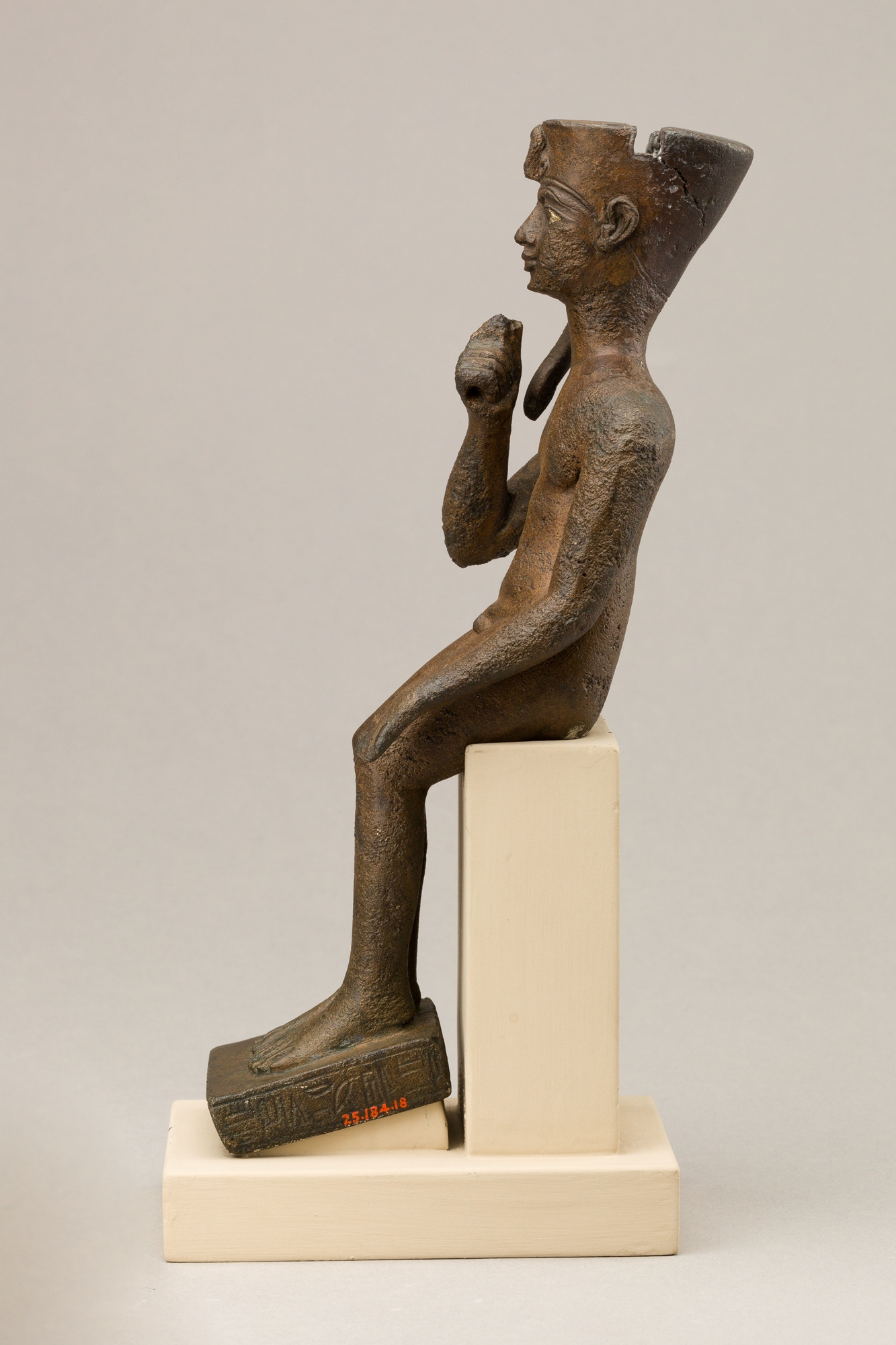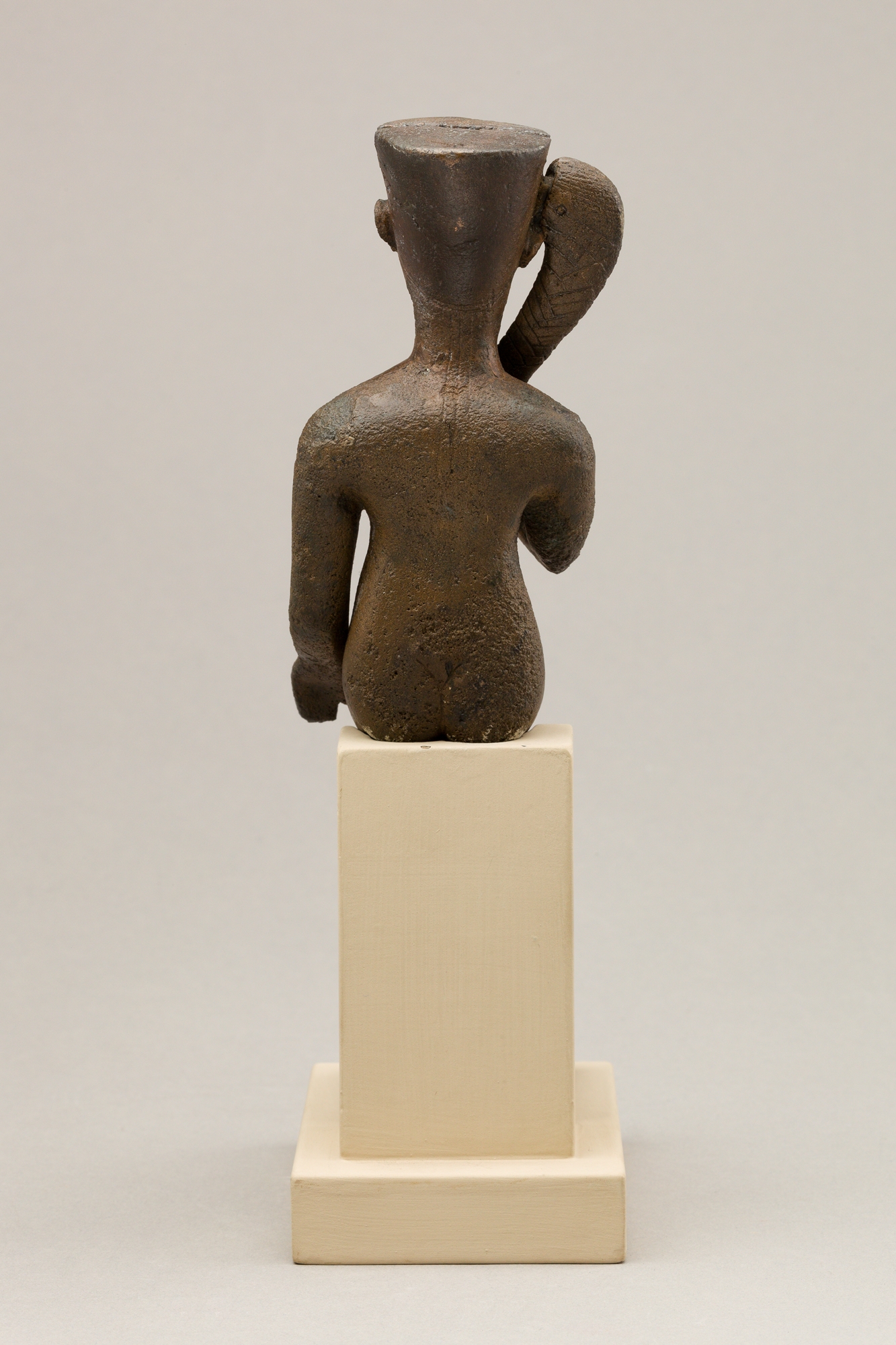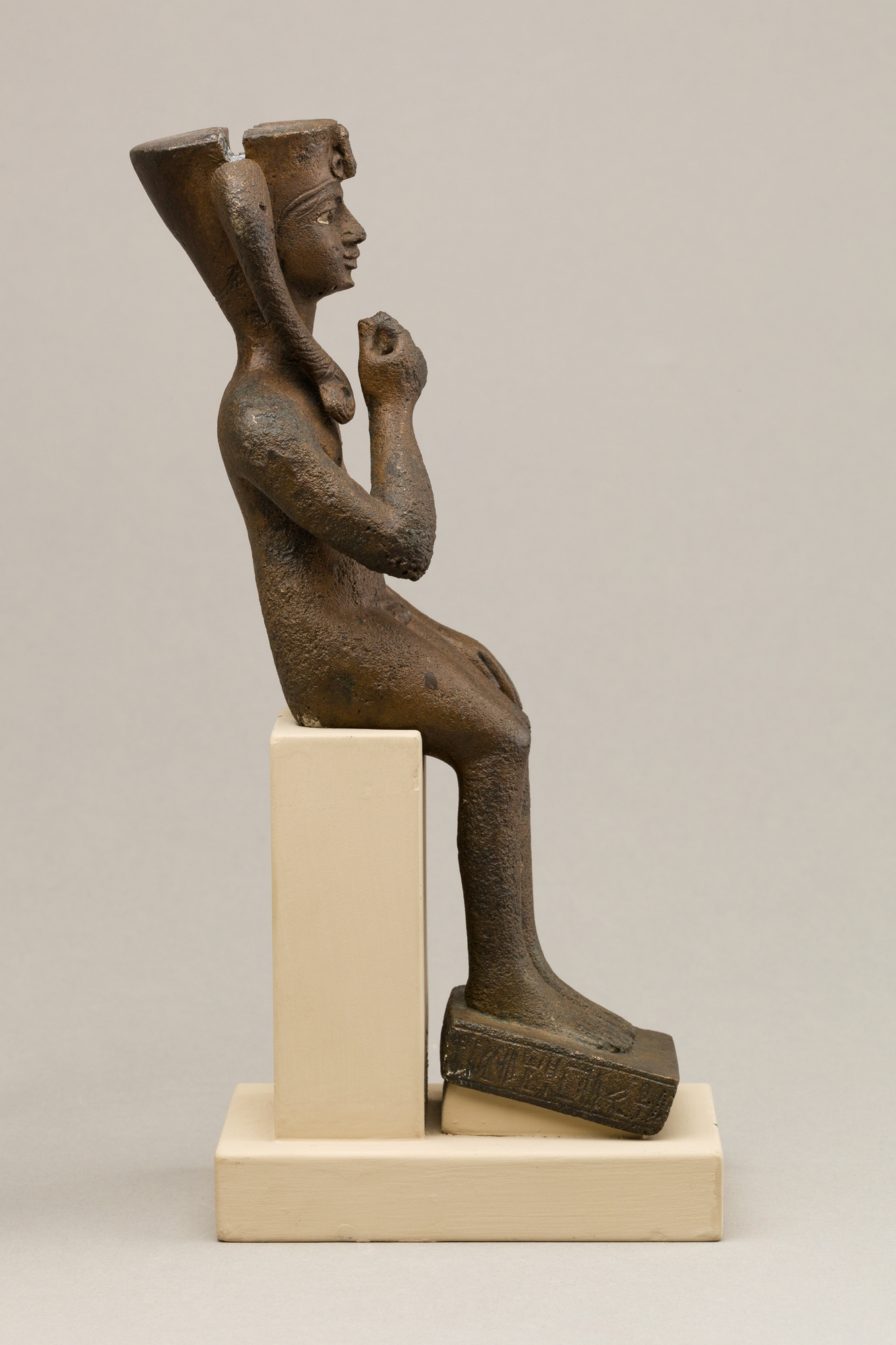Seated Harpokrates with the crown of Amun, named as "Harpokrates-the-great, the eldest, the first of Amun"
Late Period–Ptolemaic Period
Not on view
The figure represents a child god in a seated/reclining position, wearing the double feather crown, complete with a streamer at the back. The crown associates him with the god Amun, a connection that is also made explicit in the inscription on the base. The child god, as here, is usually distinguished from adult gods by a range of iconographic clues: his nudity, the finger raised to the mouth (a child-like gesture), and a sidelock on the right side of his head. A channel at the top of the crown shows where the separately cast double feathers and sun disk would have been inserted. The sidelock was also cast separately and was then mechanically attached to the crown with a pin. These kinds of technical features give interesting clues about how the manufacturing process was broken down and organized. The irises of the eyes are silver, which gives them a wonderfully life-like appearance.
Child gods grew in popularity and cult from the Third Intermediate Period onwards, rivaling even the most powerful and ancient gods, especially as temple offerings. Because of their profusion and many local forms, generally it is very difficult to assign precise identities to child gods, but an inscription on the base names this figure as Harpokrates. Horus the child (or Harpokrates) is best known as the son of Osiris and Isis, but in some cases, such as this one and 25.184.19, he is also referred to as the son of Amun. Such multi-layered associations are common to Egyptian religion, which had no strict canon perse and which, by this point in time, was built upon millennia of change and adaptation.
Due to rights restrictions, this image cannot be enlarged, viewed at full screen, or downloaded.
This artwork is meant to be viewed from right to left. Scroll left to view more.





